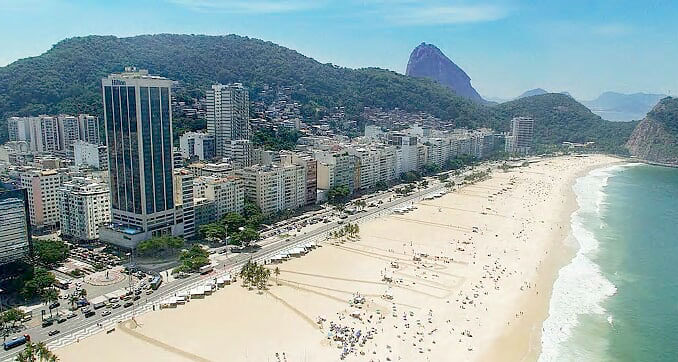
Por Georgina Cruz
For AL DIA TODAY
“Rio makes me happy,” one of our fellow tour participants confided to her companion as they and other passengers including my husband Humberto and me as we participated in a Rio de Janeiro Highlights tour from Holland America’s Amsterdam during the ship’s 2020 Grand World Voyage. And no wonder: the “Cidade Marvilhosa” (Marvelous City, as Cariocas –Rio residents—call their city) makes anyone happy with all of its marvels. Its fabled beaches of Copacabana and Ipanema, its Sugar Loaf and Corcovado Mountains, its harbor with blue waters surrounded by green hills that seem to be doing a samba around Guanabara Bay are any traveler’s dream.
On this, our second visit to Rio, while on our 128-day World Cruise, we headed for Corcovado Mountain, in the Tijuca National Forest, with the city’s most beloved icon, its most famous “marvel,” the Christ the Redeemer Statue crowning the summit of the mount. We had visited it during our first visit in 2012, but we couldn’t resist and signed up for a tour to see it again. Ships offer a variety of tours, including ours that featured a program taking in points of interest of the city and getting to the statue via a 115-year-old cogwheel tram. After the tram, there are 200 steps to negotiate to get to the statue or visitors can opt for elevators.
“Cristo Redentor,” as locals call the Christ the Redeemer Statue is one of the New Seven Wonders of the World (along with the likes of Machu Picchu in Peru, the Great Wall of China, Chichen Itza in Mexico’s Yucatan, the Roman Colosseum, the Taj Mahal in India, and the “Rose City” of Petra in Jordan). In Art Deco style, the statue depicts Jesus Christ with outstretched arms as if to embrace and protect the city below. The statue’s arms stretch 92 feet wide, with the statue measuring 98 feet high not counting its 26-foot-high pedestal that houses a chapel in honor of the Lady of Aparecida, the patron saint of Brazil.
Created by French sculptor Landowski, the Christ the Redeemer Statue was built by Brazilian engineer Heitor da Silva Costa along with French engineer Albert Caquot. A Romanian sculptor, Gheorghe Leonida sculpted its face. Built of reinforced concrete and soapstone, the statue weighs 635 metric tons and it was constructed between 1922 and 1931.
It is a symbol of Christianity, but whether one is religious or not, the 360-degree view of Rio from the statue’s platform, from a height of 2,310 feet on a clear day is simply out of this world: Sugarloaf Mountain, beaches, the amazing city are all spread out below. It is a view, that made me the first time I saw it, and again now, happy.
Since we had an overnight stay, we booked a room at the Hilton Copacabana Beach and headed there after our visit to the Christ the Redeemer Statue. The hotel is on the beach — arguably, the world’s most famous one – with spectacular views of Sugarloaf Mountain nearby. We spent part of the day on its sands, sharing them with visitors and locals alike, promenading on Copacabana’s famous tiled sidewalks and tasting capirinhas (Brazil’s national cocktail made with cachaca, lime and sugar) and feijoada (a bean stew with beef and pork) at bars and restaurants on the beach.
On board the Amsterdam, many activities and enrichment programs added to that happiness: there were samba lessons, “Brazil,” “The Girl From Ipanema,” “Copacabana” and other Brazilian hit tunes played in the lounges, feijoada (perhaps Brazil’s most famous culinary creation), bacalhau (cod) and other typical dishes on the menu in the dining room, and lectures on the MainStage about the “Marvelous City.” It was sad to leave Brazil, but we hoped to come back again!
